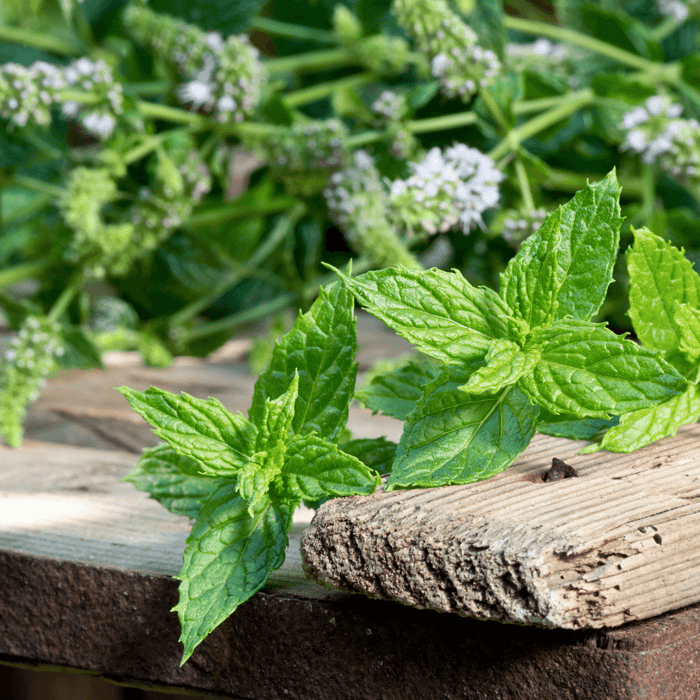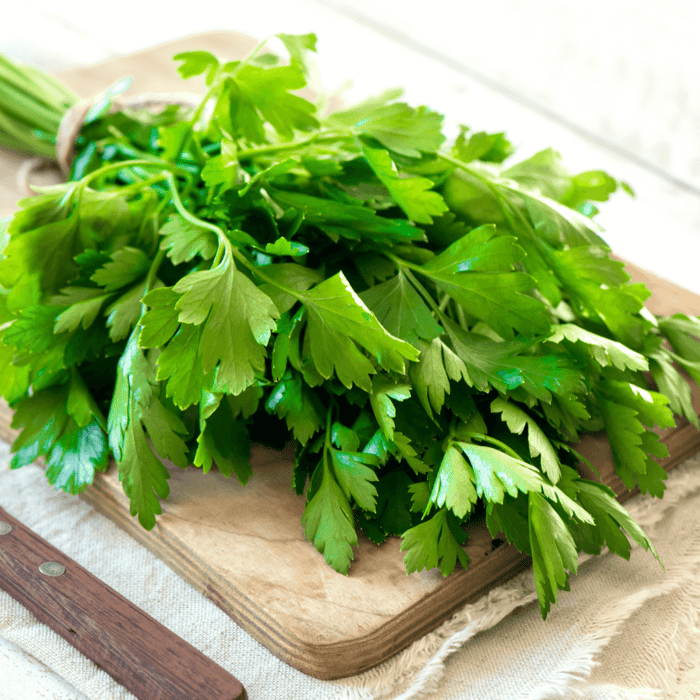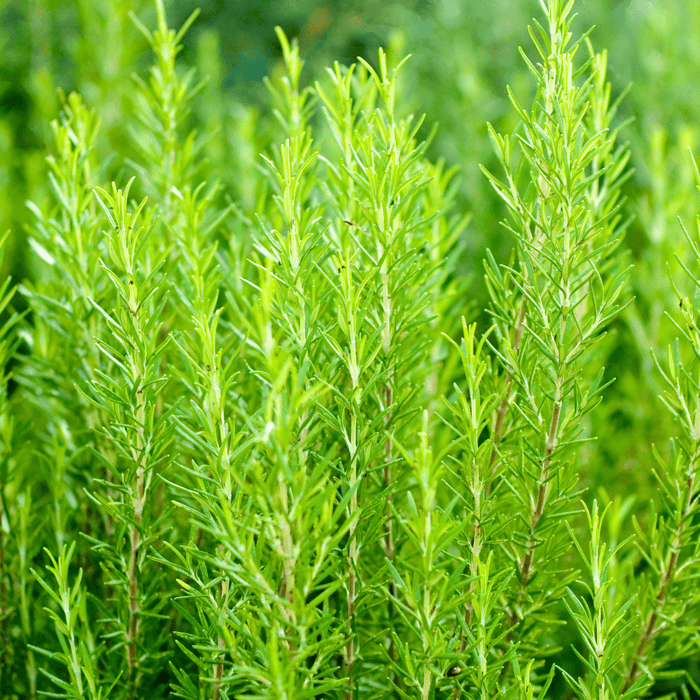Peppermint is a herb that belongs to the mint family and is known for its distinctive aroma and taste. The plant grows up to three feet tall and has dark green leaves with purple flowers. Historically, peppermint has been used for medicinal purposes and in food and drink recipes. What are the best companion plants for peppermint so it thrives?
Peppermint is widely popular in various industries, including food, medicine, cosmetics, and even aromatherapy. Companion planting refers to growing different plants together in a mutually beneficial relationship.
Peppermint is an excellent choice for companion planting because it provides numerous benefits to other nearby plants. Companion planting with peppermint can help improve soil quality, repel pests naturally, and improve crop yields.
Brief Overview of Peppermint and Its Uses:
Peppermint is widely used worldwide for its medicinal benefits through teas or essential oils. Peppermint is easy to grow from peppermint seeds or peppermint plants. Peppermint seeds are generally heirloom seeds and open-pollinated. It can grow and take over a herb garden, so it's best to plant it in a pot.
It contains menthol, which gives it a distinct refreshing taste and can help soothe digestive issues such as indigestion or nausea. Peppermint has anti-inflammatory properties and can help relieve muscle tension when applied topically to affected areas. Peppermint is also often used in herbal teas as a refreshing drink that can help with indigestion and nausea.
In cooking, peppermint adds flavor to any recipe, such as salads or desserts like brownies or ice cream. Its aromatic qualities make it useful in various industries, such as cosmetics, where it's often added to skincare products due to its cooling effect on the skin.
Peppermint Seeds
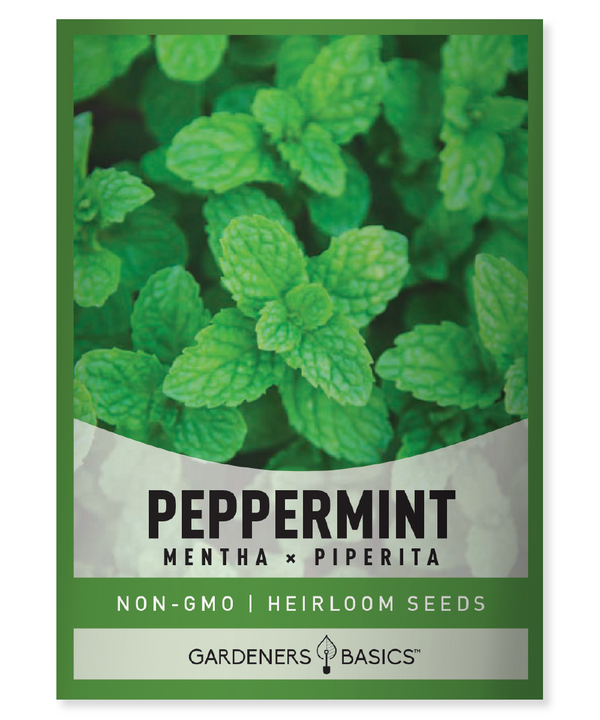
$2.49
Peppermint Seeds – Heirloom, Non-GMO, Open-Pollinated for Home Gardens Grow fresh and fragrant peppermint in your garden with our heirloom peppermint seeds, carefully selected for their non-GMO, non-hybrid, and open-pollinated qualities. Perfect for those seeking sustainable gardening, these seeds will… read more
Importance of Companion Planting:
Companion planting involves growing two or more plants together that have an ecological relationship with each other for mutual benefit. It's an ancient practice offering numerous advantages over monoculture farming, where only one crop is grown. One of the most significant benefits of companion planting includes reducing soil erosion while enhancing soil fertility by using different varieties of crops within the same field.
Companion plants can also deter pests from attacking priority crops by producing natural pesticides or attracting beneficial insects that prey on harmful ones. Furthermore, companion planting helps maintain soil moisture by reducing water loss through evaporation.
It can also help reduce the need for herbicides, pesticides, and other chemicals used in farming, which can harm the environment. Peppermint is a versatile herb with numerous benefits, making it a great choice for companion planting.
Its uses extend beyond cooking and medicinal applications to include agriculture and gardening. By incorporating this plant into their garden layout, farmers and gardeners can harness its natural properties to improve soil health, repel pests naturally, and increase crop yields.
Benefits of Companion Planting with Peppermint
Peppermint is a versatile herb that enhances the flavor of many dishes and offers numerous health benefits. Companion planting with peppermint can provide several advantages that help to improve crop quality, reduce pest damage, and boost plant growth.
Improved Soil Quality and Nutrient Uptake
Companion planting with peppermint can help to improve soil quality and nutrient uptake in several ways. First, peppermint's deep root system helps break up compacted soil, allowing air and water to penetrate more easily.
This helps improve drainage and aeration, which is essential for healthy plant growth. In addition, peppermint is a natural accumulator of nutrients such as calcium, magnesium, and phosphorus.
When grown near other plants, it can transfer these nutrients through its root system. This can help other plants to access the nutrients they need for optimal growth.
Another way companion planting with peppermint improves soil quality is by increasing organic matter content. As peppermint leaves decompose on the ground surface or are incorporated into the soil as mulch, they add organic matter that improves soil structure and fertility.
Pest Control and Natural Repellent Properties
Peppermint has natural pest-repellent properties, making it an effective companion plant for controlling insect pests such as aphids, spider mites, and whiteflies. The strong scent of mint masks the scent of nearby plants, making it more difficult for pests to locate them.
In addition to its repellent properties, peppermint attracts beneficial insects such as ladybugs and lacewings that feed on pest insects. This helps to maintain a healthy balance between pests and predators in the garden.
Increased Yields and Plant Health
Companion planting with peppermint can help to increase yields and improve plant health in several ways. First, peppermint can help reduce soil-borne diseases such as verticillium wilt, which can reduce crop yields.
In addition, peppermint contains compounds that have been shown to stimulate plant growth and improve stress resistance. These compounds are released into the soil through the roots of peppermint plants, where they can be taken up by neighboring plants.
Companion planting with peppermint can help to conserve water by reducing evaporation from the soil surface. The dense mint foliage helps shade the ground, keeping it cool and moist even in hot weather.
Companion planting with peppermint offers several benefits that can help to improve soil quality, control pests naturally, and increase yields and plant health. By selecting compatible companion plants for your garden, you can create a diverse ecosystem that supports healthy plant growth and reduces the need for chemical pesticides and fertilizers.
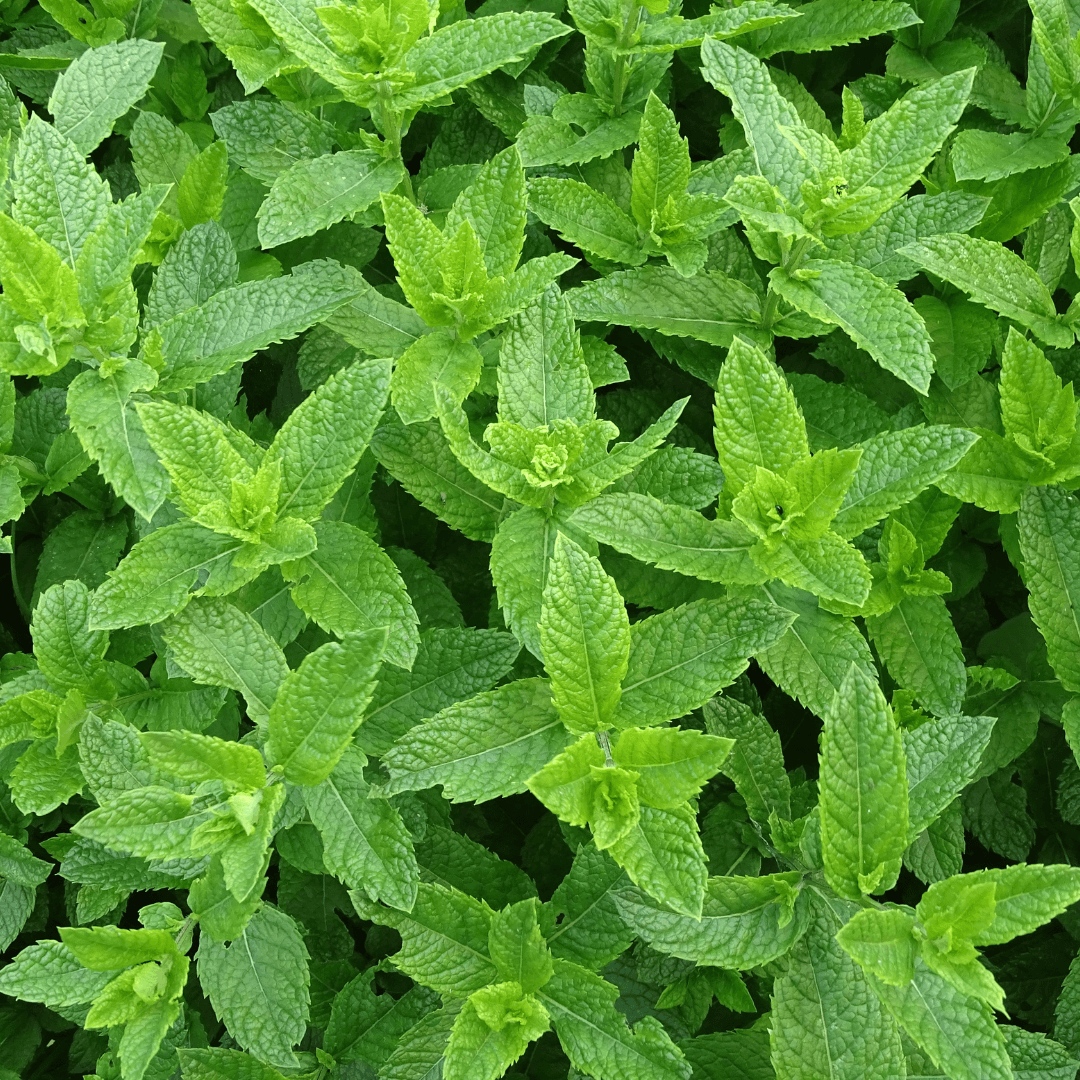
Best Companion Plants for Peppermint
Companion planting is a fantastic way to improve the health and productivity of your garden. When it comes to peppermint, several plants make excellent companions.
These plants work well alongside peppermint and provide numerous benefits like pest control, soil improvement, and even enhanced flavors in cooking. In this section, we will discuss the best companion plants for peppermint.
Chamomile: Attracts Beneficial Insects and Improves Soil Quality
Chamomile is an excellent companion plant for peppermint as it attracts beneficial insects like ladybugs and lacewings, which help control garden pests. Additionally, chamomile improves soil quality by adding nitrogen, potassium, and other nutrients essential for healthy plant growth. Chamomile also makes a great tea with peppermint leaves, making it a perfect addition to any herb garden.
Herbal Tea Seeds For Planting | 5 Variety Pack
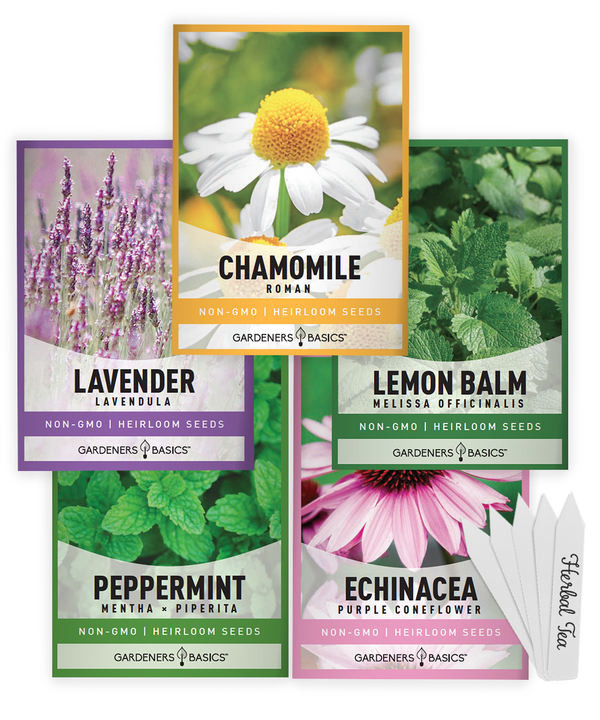
$9.95
Create a Homegrown Herbal Tea Garden with Our 5 Seeds Variety Pack Introducing our 5 Herbal Tea Seeds Variety Pack, a must-have for tea lovers and garden enthusiasts! This incredible collection includes five popular and aromatic herbs: Echinacea, Peppermint, Lavender, Chamomile,… read more
Nasturtiums: Natural Pest Repellent with Added Color
Nasturtiums are an attractive addition to any garden as they add color and vibrancy while serving as a natural pest repellent. Nasturtiums release chemicals that repel pests like aphids, whiteflies, and cucumber beetles, which often feed on mint family plants like peppermint. The flowers of nasturtiums are edible, making them not only functional but also beautiful.
Dill: Attracts Beneficial Insects and Complements Flavors
Dill is another great companion plant for peppermint as it attracts beneficial insects such as wasps that help to control harmful pests like aphids and spider mites. Dill also improves soil quality by releasing minerals like calcium into the earth, which benefit all surrounding plants, including your beloved peppermint. Furthermore, dill complements the flavor of peppermint in cooking, especially when it comes to cooking with fish.
Lavender: Repels Pests and Attracts Pollinators
Lavender is a popular herb that offers several benefits to the garden. It is known for its pest-repelling qualities as it deters pests like moths, fleas, and mosquitoes which can cause damage or disease to your plants.
Lavender also attracts pollinators like bees which helps to ensure healthy yields in your garden. Additionally, lavender adds a pleasant fragrance to the garden and can be used dried or fresh in many culinary dishes.
Companion planting with peppermint is an excellent way to improve your garden's overall health and productivity. Chamomile, nasturtiums, dill, and lavender make great companions for peppermint as they attract beneficial insects, enhance soil quality and provide numerous other benefits.
Compatibility between plants should be achievable with careful consideration of spacing requirements and regular plant growth monitoring. Try incorporating these companion plants into your herb garden for a beautiful, functional space that will delight your senses!
Other Potential Companion Plants for Peppermint
Marigolds: Natural Pest Repellent that Also Adds Color to the Garden
Marigolds are a well-known companion plant for many herbs, including peppermint. They add a bright pop of color to the garden, but their usefulness goes far beyond aesthetics. Marigolds have natural pest-repellent properties that work well against nematodes and other soil-borne pests.
They release compounds through their roots that are toxic to these pests, making them an excellent choice to plant near peppermint. Many varieties of marigolds exist, but French and African marigolds are particularly effective at repelling pests.
Plant them near your peppermint plants for the best results. As a bonus, marigolds attract beneficial insects such as ladybugs and lacewings, which will help keep other pests under control.
Sage: Repels Pests and Enhances the Flavor of Peppermint in Cooking
Sage is another excellent companion plant for peppermint due to its pest-repelling properties. It is particularly effective against cabbage moths, carrot flies, and some species of spider mites.
Plant sage around your peppermint plants or even interplant them within your mint patch for protection. In addition to its pest-repelling qualities, Sage also complements the flavor of peppermint in cooking.
Both herbs have a slightly bitter taste profile that can be balanced by adding sweet or savory flavors. Use fresh sage leaves in salads or garnish over soups or stews containing fresh mint.
Popular Herb Seeds for Planting | 35 Variety Pack
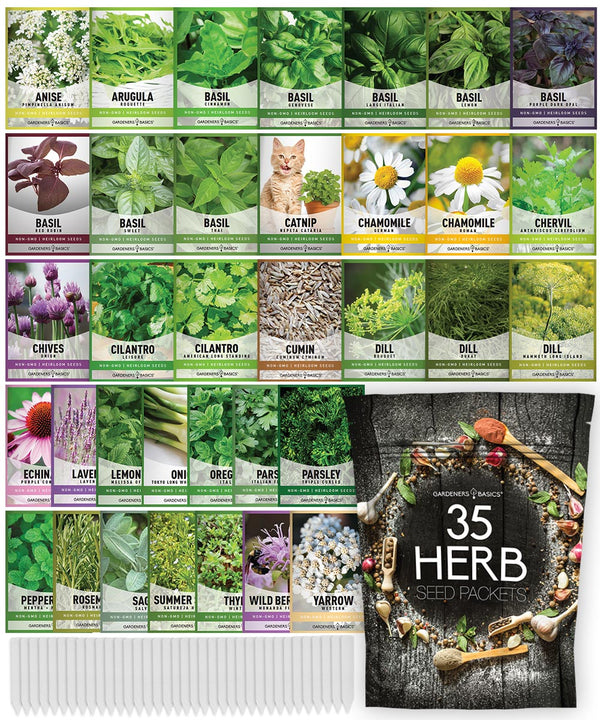
$29.95
$49.95
Heirloom, non-GMO herb seeds for indoor and outdoor home gardens! Introducing our 35 Herb Seeds Variety Pack, the ultimate selection for any herb garden enthusiast! This premium assortment includes heirloom herb seeds that are non-hybrid, open-pollinated, and non-GMO, ensuring you get only… read more
Thyme: Repels Pests and Improves Soil Quality
Thyme is an aromatic herb known for its antimicrobial properties and ability to repel certain pests such as whiteflies, spider mites, and cabbage moths. Plant thyme near your peppermint patch to take advantage of these pest-repelling qualities. Thyme also has the added benefit of improving soil quality.
It is a hardy herb that can grow in poor soil conditions and helps to break up compacted soils. This improves water infiltration and root development, leading to healthier plants.
Companion Planting Tips for Peppermint
When planting companion plants with peppermint, there are a few things to remember to ensure successful growth: - Consider spacing requirements when planting companion plants with peppermint.
Some plants may require more room than others, so research before planting. - Monitor plant growth regularly to ensure compatibility between plants.
If one plant begins to overtake another, it may be time to re-evaluate the placement. - Rotate crops regularly to avoid soil-borne diseases and pests.
- Choose companion plants that have similar watering and sunlight requirements as peppermint. - Avoid planting vegetables from the mint family (such as basil or oregano) near your peppermint patch, as they may compete for resources.
Incorporating companion planting techniques into your herb garden can help increase yields, improve soil quality, and reduce pest problems naturally. You can create a thriving ecosystem that benefits you and your plants by selecting the right combination of herbs and flowers.
Tips for Successful Peppermint Companion Planting
Consider Spacing Requirements When Planting Companion Plants with Peppermint
When planting companion plants with peppermint, it's important to consider their spacing requirements. Some plants may require more space than others to grow properly, and overcrowding can lead to poor plant health and reduced yields. It's also important to consider the height of the companion plants, as taller plants can shade out peppermint and limit its growth.
One strategy for successful spacing is to plant taller companions on the north side of the bed or garden plot, and shorter companions on the south side. This ensures that all plants receive adequate sunlight while avoiding shading issues.
Monitor Plant Growth Regularly to Ensure Compatibility Between Plants
Monitoring plant growth regularly is an essential aspect of successful peppermint companion planting. It allows you to identify compatibility issues between different plant species before they become problematic.
For example, some companion plants may release chemicals into the soil to inhibit peppermint's growth or decrease its yields. By monitoring plant growth regularly, you can identify these issues early on and take corrective action before they become too severe.
Rotate Crops
Crop rotation is another important strategy for successful peppermint companion planting. It helps prevent soil-borne diseases from building up in one area of your garden over time, which can significantly reduce crop yields.
To rotate crops effectively, it's important to group plants by their botanical families and nutrient requirements. For example, if you've planted peppermint with chamomile in one area this season, consider rotating them with a different family group next year.
When rotating crops, avoid planting members of the same family in the exact location two years in a row. Instead, move them at least two rows away from their previous location or choose another area entirely.
Conclusion Best Peppermint Companion Plants
Peppermint companion planting can be a rewarding and effective way to improve plant growth, soil quality, and pest control. You can ensure a successful and bountiful harvest by considering spacing requirements, monitoring plant growth regularly, and rotating crops. Remember to choose companion plants compatible with peppermint regarding soil nutrient requirements, water needs, and sunlight exposure.
Take the time to plan your garden carefully for optimal results. With these tips, you'll surely enjoy a thriving garden full of delicious peppermint and its companions.
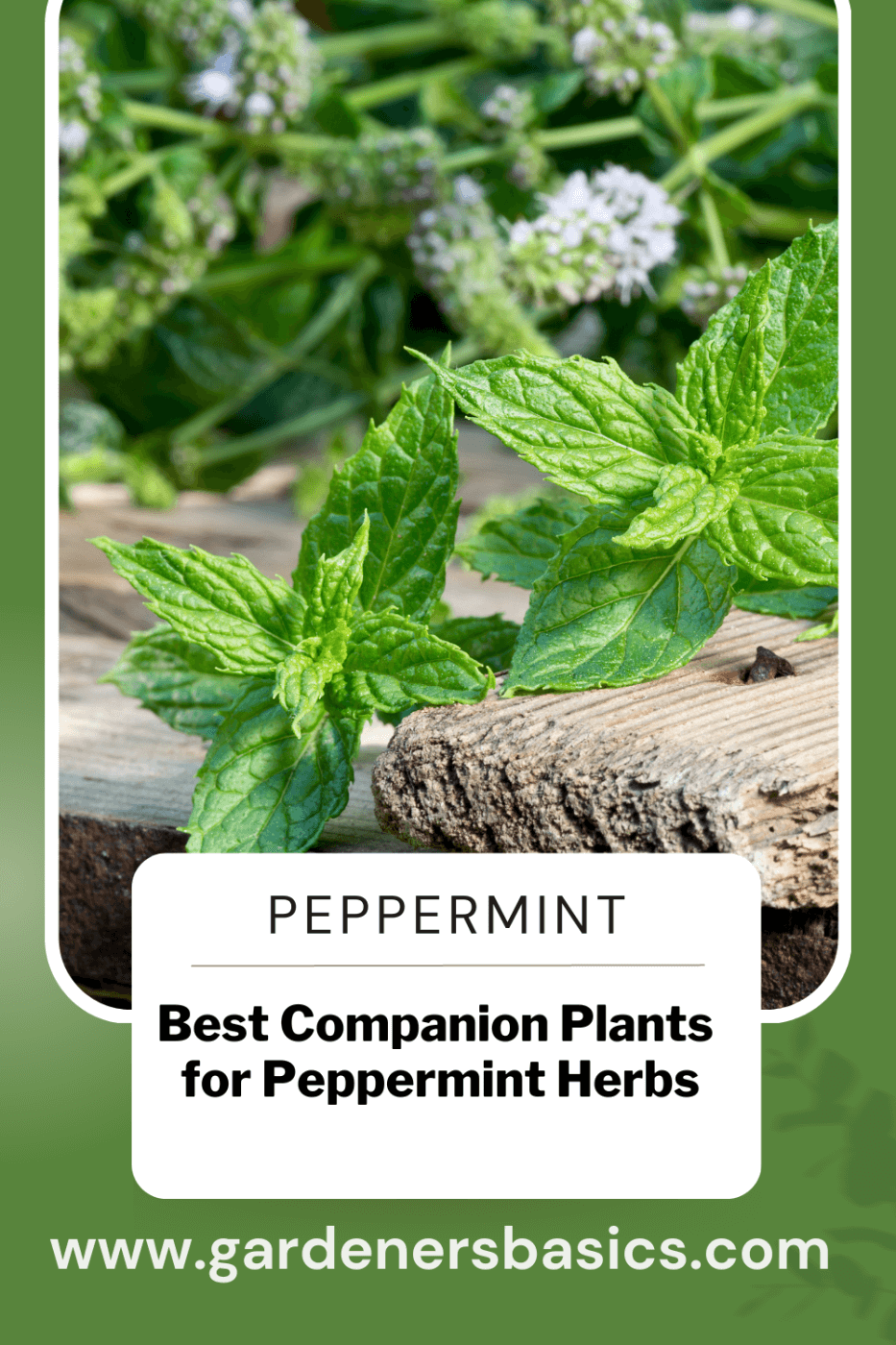 FAQ: Best Companion Plants for Peppermint
FAQ: Best Companion Plants for Peppermint
Q: What are companion plants, and why are they essential for peppermint?
A: Companion plants are specific plants that benefit each other when grown nearby. They can help deter pests, attract beneficial insects, provide shade or support, and enhance the overall health and productivity of the main plant. For peppermint, companion plants can help repel pests, improve their fragrance, and create a balanced microclimate.
Q: What are some good companion plants for peppermint?
A: Several plants make excellent companions for peppermint. Here are a few recommendations:
- Chives: Chives help repel aphids and deter spider mites and common peppermint pests.
- Nasturtiums: These colorful flowers attract beneficial insects like predatory bugs and parasitic wasps, which help control aphids and other pests.
- Chamomile: Chamomile acts as a natural fungicide and may help prevent diseases in peppermint. It also attracts beneficial insects.
- Thyme: Thyme has antimicrobial properties and can help deter pests like cabbage worms and cabbage loopers that may occasionally bother peppermint.
- Bee balm: Bee balm attracts pollinators like bees and butterflies, benefiting the peppermint and nearby plants.
- Marigolds: Marigolds repel aphids, nematodes, and other pests, making them a valuable companion for peppermint.
Q: Can I grow peppermint with other herbs?
A: Yes, peppermint can be grown alongside other herbs. In fact, many culinary herbs make good companions for peppermint. Examples include basil, oregano, rosemary, sage, and parsley. Just ensure the other herbs have light, water, and soil requirements similar to peppermint.
Q: How should I plant companion plants with peppermint?
A: When planting companion plants with peppermint, consider their growth habits and spacing requirements. Plant taller plants like bee balm or marigolds in the back or on the sides of the peppermint patch to provide shade and attract beneficial insects. Smaller herbs like chives or thyme can be planted closer to the peppermint plants. Aim for a balanced arrangement that allows each plant to thrive.
Q: Can I grow peppermint with vegetables or fruits?
A: Peppermint can be grown alongside some vegetables and fruits, but there are a few considerations. Avoid planting peppermint near root vegetables like carrots and potatoes, as their growth may be hindered. However, growing peppermint near cabbage, tomatoes, and peppers can be beneficial to repel pests. Avoid planting peppermint near strawberries, as it can inhibit their growth.
Heirloom Seeds Collection | 3-in-1 Seed Vault, Survival Seed, and Herbs 105 Varieties
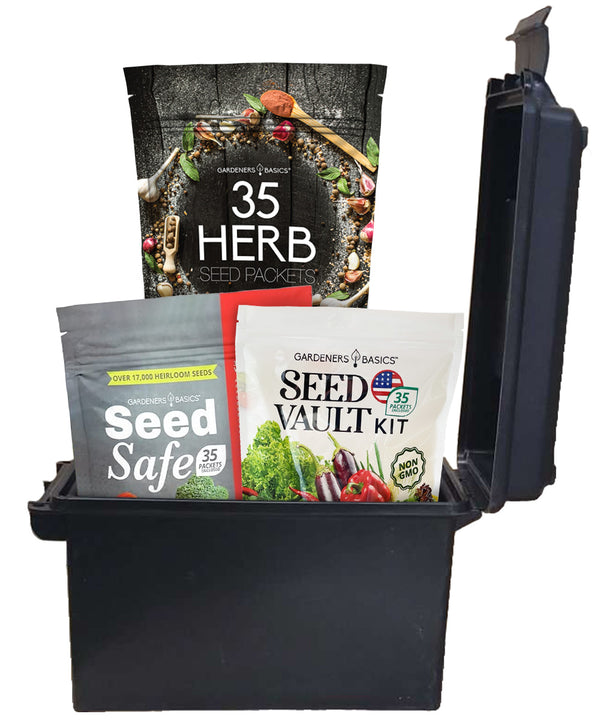
$82.95
$149.95
Heirloom Seeds Collection - Ultimate 3-in-1 Seed Vault, Survival Seed, and Herb Variety Packs for a Thriving Garden Discover the Heirloom Seeds Collection, the perfect combination of our Seed Vault Kit, Seed Safe Survival Seed Kit, and Popular Herb Seeds… read more
Q: How do companion plants benefit peppermint?
A: Companion plants provide several benefits to peppermint:
- Pest control: Many companion plants repel pests or attract beneficial insects that help control pests, reducing the risk of damage to peppermint.
- Improved fragrance: Certain companion plants, such as chamomile or thyme, can enhance the scent of peppermint.
- Disease prevention: Some companion plants have natural antimicrobial properties or help create a healthier microclimate, reducing the risk of diseases in peppermint.
- Biodiversity: Growing companion plants alongside peppermint promotes biodiversity, which can positively affect the garden's overall health and resilience.
Q: Are there any plants I should avoid planting near peppermint?
A: While peppermint has many beneficial companion plants, there are a few plants to avoid planting nearby:
- Other mints: Avoid planting different mint varieties close to each other, as they can easily cross-pollinate and create hybrid plants with unpredictable characteristics.
- Dill: Dill can negatively affect the growth of peppermint, so it's best to keep them separated.
Q: Can I use companion plants to control weeds in my peppermint patch?
A: Companion plants can help suppress weeds in your peppermint patch. Planting dense and low-growing companions like thyme or chamomile can create a living mulch that shades the soil and inhibits weed growth. However, it's important to ensure that the companion plants do not compete with peppermint for resources or become invasive themselves.
Q: How close should companion plants be to peppermint?
A: The ideal distance between companion plants and peppermint can vary depending on the specific plants and their growth habits. As a general guideline, plant taller companions 1 to 2 feet away from peppermint to avoid shading it excessively. Smaller herbs or flowers can be planted closer, around 6 to 12 inches away. Consider the mature size of each plant and provide enough space for them to thrive.
Q: Can I use companion planting to improve the flavor of peppermint?
A: While companion plants can enhance peppermint's fragrance and overall health, their influence on flavor is minimal. Peppermint's flavor is primarily determined by its genetic characteristics and growing conditions. However, the presence of aromatic herbs like thyme or oregano nearby may create a pleasant sensory experience when harvesting or enjoying peppermint.
Q: Can I grow peppermint in containers with companion plants?
A: Yes, peppermint can be grown in containers alongside companion plants. Select companions with similar sunlight and watering requirements, and ensure the container is large enough to accommodate both the peppermint and its companions. Provide adequate drainage and monitor the moisture levels to avoid overwatering.
Q: Are there any other benefits of companion planting for peppermint?
A: Yes, companion planting offers additional benefits for peppermint. It can improve overall garden aesthetics, attract pollinators, create a more diverse ecosystem, and increase resilience to pests and diseases. Companion plants can also provide a natural and sustainable approach to gardening by reducing the need for chemical interventions.



